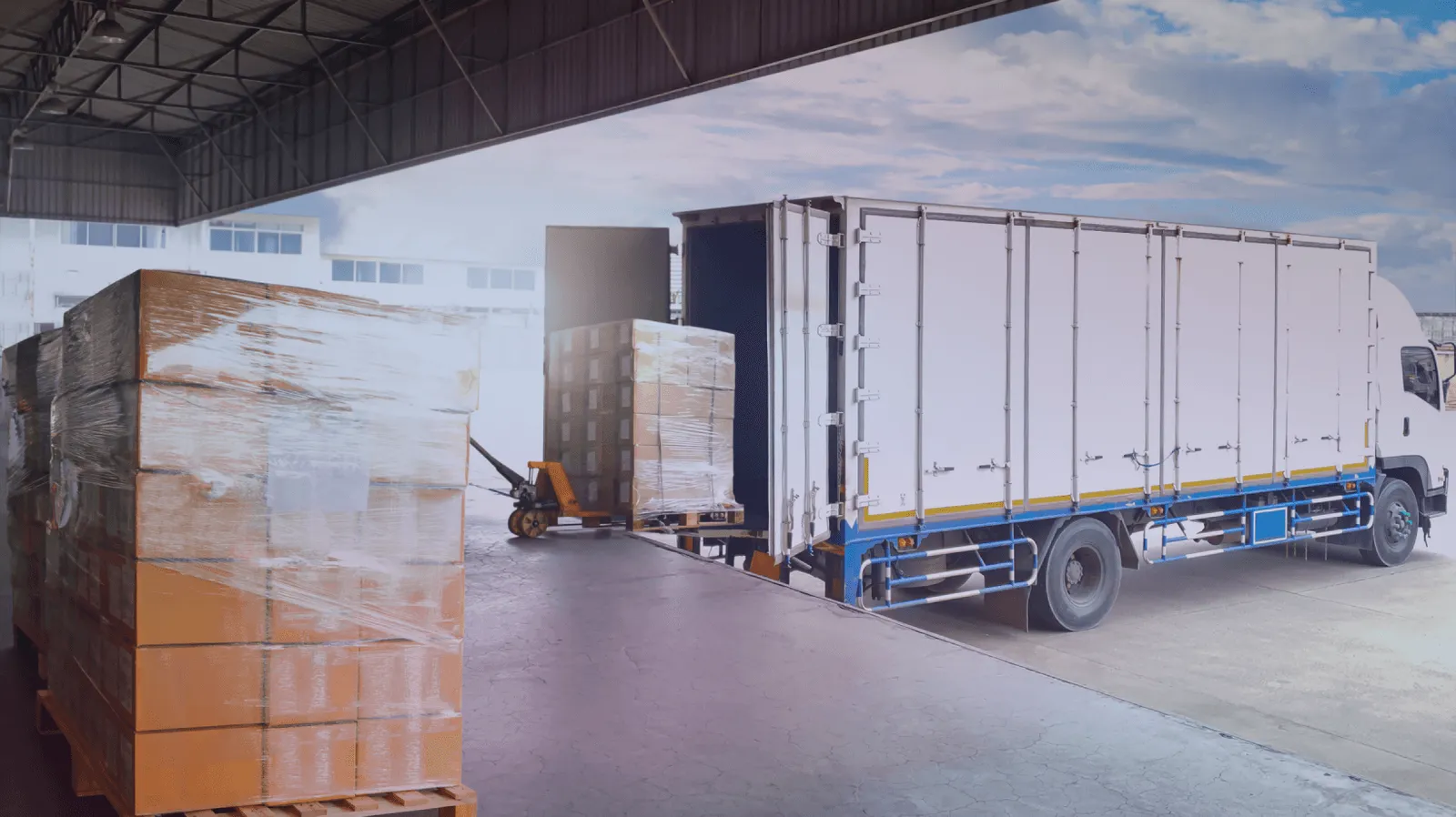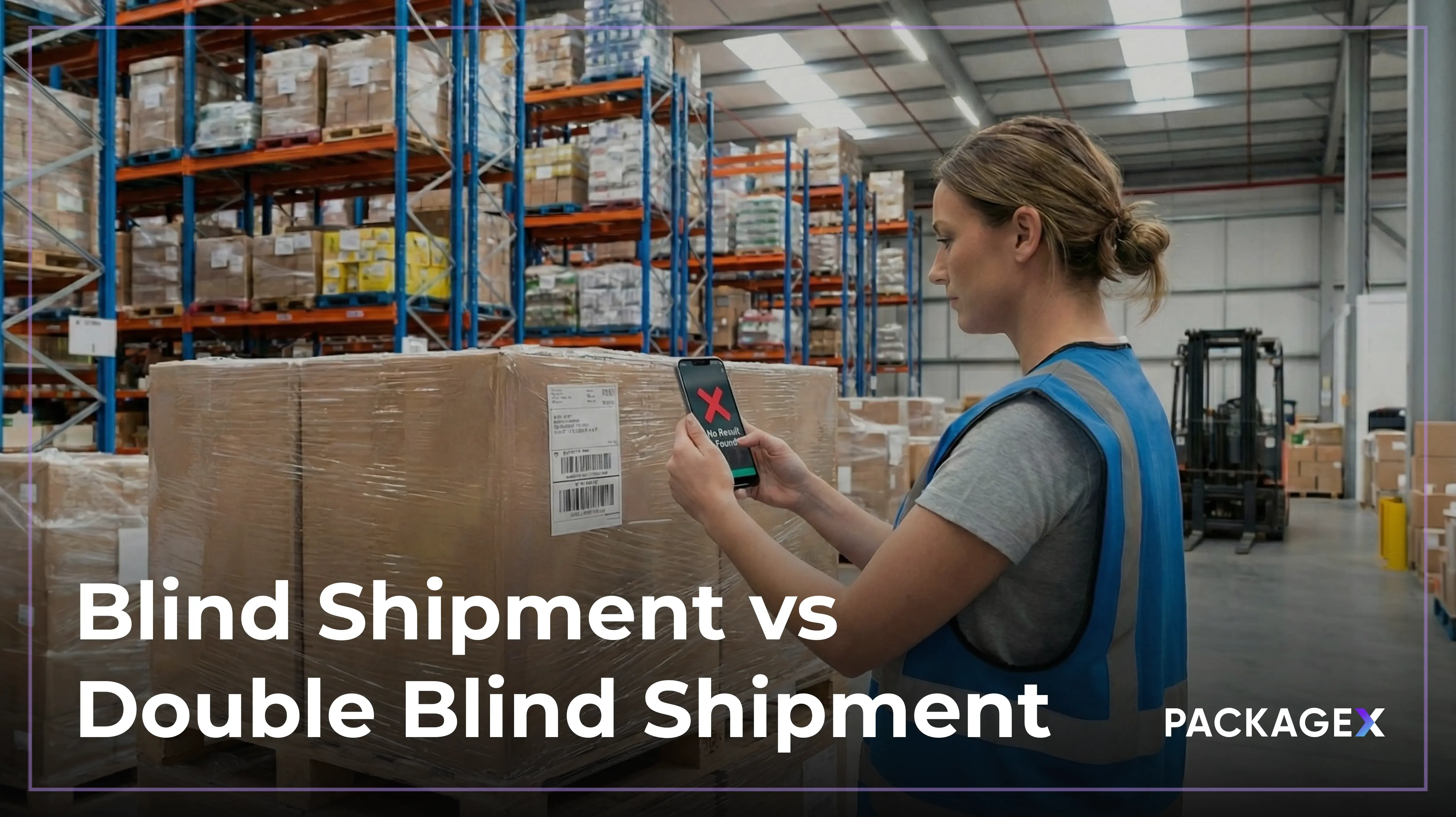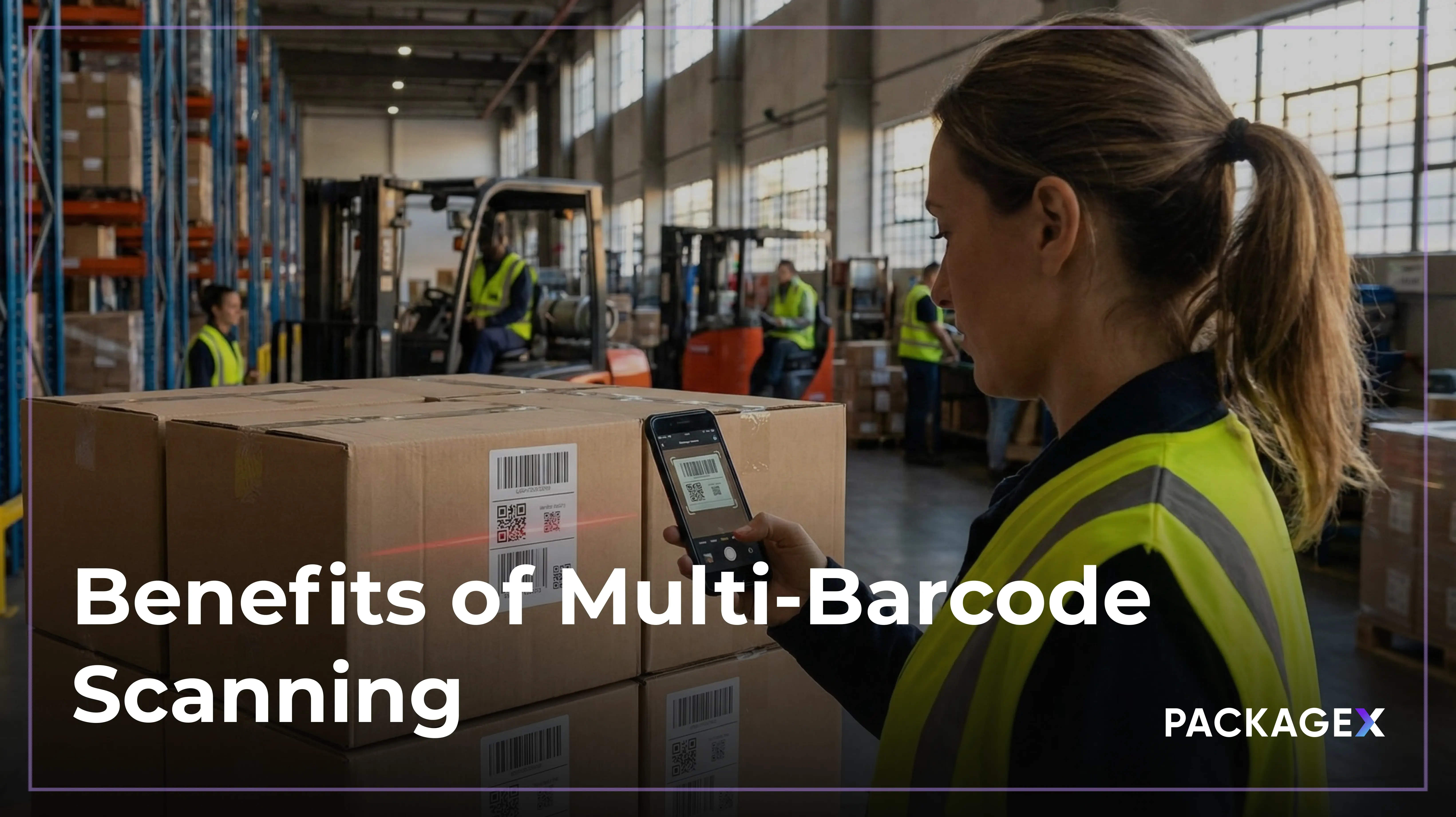In 2025 and beyond, efficiency is everything in warehouse logistics and cross docking in logistics is becoming a necessity for strategic workflow. With increasing pressure to accelerate fulfillment and cut overhead costs, more businesses are turning to cross dock solutions to streamline their supply chain.
The global cross docking market is expected to reach USD 307.80 billion by 2030, with a projected CAGR of 4.20%. This rapid growth highlights how essential cross docking has become for logistics leaders aiming to stay competitive. The goal is to achieve less storage time with better inventory management.
In this blog, we’ll explore how cross docking works, how it integrates into modern logistics, and why it’s key to building more agile supply chain.
What Is Cross Docking?
Cross-docking in logistics refers to the process where goods move directly from inbound vehicles (like trucks or railcars) to outbound transportation with little or no storage in between. At a cross dock warehouse, shipments are quickly unloaded, sorted, and transferred onto outbound trucks based on final delivery destinations.
Unlike traditional warehouse management, cross docking eliminates the need for long-term storage by moving goods swiftly through the distribution center.
Cross dock operations are ideal when multiple suppliers send bulk shipments that need to be broken down into smaller loads or reorganized for optimized delivery routes.
How Cross Docking Works?
Cross docking is a logistics method where goods are received at a cross dock warehouse. Then sorted by destination, and quickly transferred to outbound logistics transportation with minimal to no storage time. Instead of holding inventory, a cross dock facility acts as a transfer hub, streamlining operations and speeding up deliveries.
Here’s how the cross docking process typically works:
1. Receiving
Inbound shipments arrive at the cross dock warehouse, often located near major transportation hubs like seaports, rail terminals, or airports. Dock doors are designated for quick unloading.
2. Sorting & Re-palletizing
Inventory is sorted based on its next destination. This may involve breaking down pallets or consolidating items for efficient outbound shipping.
3. Staging for Outbound
Sorted goods are positioned near their assigned outbound dock doors. This stage is critical to ensure that transfers are fast and accurate.
4. Loading & Departure
Goods are loaded onto outbound trucks, trains, or other freight vehicles and dispatched without long-term storage, this is the core value of cross docking services.
Thanks to its fast-paced structure and reduced handling, cross docking minimizes storage costs, shortens delivery windows, and boosts supply chain efficiency.
[video:https://www.youtube.com/watch?v=4Ei3befyhLs]
Benefits of Cross Docking in Warehouse Logistics
The right cross docking strategy can transform how you move goods. Cross docking offers real, measurable advantages and some of them are as following:
Reduced Storage Costs
With cross docking, there’s no need to store inventory for long periods. Goods arrive, get sorted, and head back out just within hours. That means businesses can cut down on expensive warehouse space and save thousands in monthly storage costs.
Faster Delivery Times
Cross dock systems help speed up the entire shipping process. Orders can leave your facility the same day they arrive, making next-day or even same-day delivery far more doable.
Improved Supply Chain Efficiency
Every extra step in your supply chain management creates room for delays. Cross docking services simplify that chain. Fewer hand-offs. Fewer stops. And a much smoother flow from supplier to customer.
Reduced Material Handling
Each time a product is moved, there's a risk of damage. In a cross dock warehouse, items are handled less. That’s especially useful for perishable goods, electronics, or anything fragile.
Lower Transportation Costs
Cross docking allows for smarter load consolidation. Instead of sending out trucks half-full, you can group shipments and cut down on fuel costs. It’s more efficient for your wallet and the planet.
Better Inventory Management
With cross docking services, inventory moves fast and stays visible. You’ll have a better sense of what’s coming in and going out, helping you plan smarter and reduce overstock or shortages.
Enhanced Product Quality
Perishable items and goods with tight shelf lives benefit most from cross dock logistics. The faster they get from supplier to shelf, the fresher they stay. That translates to better customer satisfaction and fewer returns.
Increased Sustainability
Fewer warehouse fulfilment hours, fewer trucks, and less waste, cross docking supports a leaner, greener supply chain. It’s a practical way to cut emissions without sacrificing performance.
Types of Cross Docking
Cross docking comes in various forms, each tailored to meet specific industry needs and logistics goals. Below, we’ll explore the key types of cross docking, and discuss when each is most beneficial.
1. Manufacturing Cross Docking
In manufacturing cross docking, raw materials or components are delivered directly to the production line, bypassing storage entirely. This method is most beneficial for manufacturers aiming to reduce inventory holding costs and speed up production. By synchronizing deliveries with production schedules, manufacturers can streamline operations and avoid delays caused by stock shortages or overstocking.
Best For:
- Manufacturers with just-in-time (JIT) production systems
- Companies that handle time-sensitive materials or components
2. Distributor Cross Docking
Distributor cross docking involves receiving products from multiple suppliers, sorting them, and quickly shipping them to retailers or other distribution centers. This type is ideal for businesses looking to consolidate shipments and optimize their distribution channels. It allows distributors to reduce storage needs and improve the speed at which products reach customers or retail locations.
Best For:
- Wholesalers and distributors handling diverse product lines
- Companies seeking to consolidate multiple supplier shipments into one
3. Retail Cross Docking
In retail cross-docking, products from suppliers are delivered to a distribution center, where they are sorted and quickly sent to retail stores. This method is particularly beneficial for retailers with fast-moving products or those running promotions. By minimizing the need for storage, retail cross-docking enables faster inventory replenishment of store shelves and helps meet customer demand more efficiently.
Best For:
- Retailers with high turnover items or seasonal inventory
- Businesses focused on quick stock replenishment
4. Opportunistic Cross Docking
This form of cross-docking occurs when goods that were not initially planned for cross-docking are identified and prepared for immediate shipment. Opportunistic cross-docking is commonly used in situations where companies aim to take advantage of unexpected demand or optimize unscheduled deliveries.
Best For:
- Companies with flexible inventory management systems
- Businesses responding to sudden demand or emergencies
Each type of cross docking can significantly streamline operations, but the choice of method depends on specific business needs, product types, and supply chain complexity.
5. Continuous Cross Docking
This type of cross docking focuses on a constant, uninterrupted flow of goods from inbound trucks directly to outbound shipments, with little to no time spent in storage. It’s commonly used for high-demand items that need to move quickly through the supply chain.
Best For:
- High-volume operations with predictable demand
- Businesses handling fast-moving consumer goods or perishables
6. Consolidation Cross Docking
Consolidation cross docking is used when multiple smaller shipments are combined into one larger load before leaving the cross dock warehouse. This method helps reduce transportation costs and improves delivery efficiency, especially when shipping to the same region or customer.
Best For:
- Distributors handling small, frequent supplier shipments
- Logistics teams aiming to optimize truckload capacity
7. Deconsolidation Cross Docking
This method does the opposite, it takes in large, bulk shipments and breaks them down into smaller ones for local delivery. Deconsolidation cross docking is often used in retail, where goods need to be sent from a central hub to multiple store locations.
Best For:
- Businesses distributing goods to many endpoints
- Order fulfillment of high volumes of individual orders
How Cross Docking Improves Warehouse Logistics?
Cross docking is pivotal in transforming warehouse operations by streamlining processes and enhancing overall efficiency. Here are several key ways it improves warehouse logistics:
1. Reduced Time
One of the standout advantages of cross dock solutions is the drastic reduction in dwell time. Instead of products sitting idle in storage, goods move swiftly from inbound logistics to outbound delivery, often within hours.
2. Higher Inventory Accuracy
With fewer storage steps and less manual handling, cross docking reduces the chances of errors like miscounts, misplaced items, or damage. Inventory briefly enters the cross dock facility, making it easier to track and update in real-time.
3. Faster Order Fulfillment
In a market driven by next-day delivery expectations, the speed of fulfillment is everything. Cross docking services help businesses skip the warehousing delay, routing goods straight to customers or retail locations.
4. Lower Operational Costs
With a cross dock warehouse, the need for long-term storage is greatly reduced along with the costs that come with it. Labor hours, handling fees, and inventory carrying costs all drop when products don’t linger in storage.
5. Scalable Logistics Operations
As order volumes fluctuate throughout the year, especially during peak seasons or promotional events, a cross dock facility offers the flexibility to scale operations without expanding warehouse space.
Why Choose PackageX for Cross Docking Optimization?
Cross docking demands precision, speed, and real-time coordination across your supply chain. PackageX provides warehouse and logistics teams with the technology to run efficient cross dock operations without relying on complex custom systems or heavy infrastructure upgrades. With automation, real-time data, and seamless integrations, PackageX helps you move goods faster and smarter, right through your cross dock facility.
Here’s how PackageX enhances cross docking:
- Real-time tracking for inbound and outbound shipments to eliminate delays and ensure goods move swiftly through your cross dock warehouse.
- Automated inventory updates using smart scanning tools to reduce human error and improve inventory accuracy at every transfer point.
- No-code integrations with your existing systems, allowing you to plug PackageX into your operations without disrupting workflows.
- End-to-end visibility into your cross docking services, helping teams make faster, more informed decisions on the ground.
- Scalable tools built for high-volume, time-sensitive operations, ideal for retailers, distributors, and 3PLs handling fast-moving goods.
PackageX empowers your team with tools to simplify cross dock logistics. It’s a modern solution for companies that want to increase efficiency without increasing overhead.
FAQs
What is an example of a cross-dock?
With this approach, goods are sorted and loaded at the supplier's end, complete with customer delivery instructions. Retailers like Walmart, for instance, send various products to large distribution centers, where they're sorted and prepared for delivery to specific store locations.
What is the difference between safety stock inventory and the cross docking method?
Safety stock helps retailers maintain enough inventory to handle unexpected demand spikes or supplier shortages. In contrast, cross-docking enables a just-in-time approach that, with proper planning, adapts to demand changes without relying on long-term storage.
How does cross-docking improve logistical efficiency?
Cross docking improves logistical efficiency by reducing storage time, speeding up order fulfillment, and streamlining the movement of goods through a cross dock warehouse. It minimizes handling and helps businesses respond faster to demand. This leads to lower operational costs and a more agile supply chain.
What is the purpose of cross-docking in logistics?
The main purpose of cross docking in logistics is to transfer goods directly from inbound to outbound transport with minimal or no storage in between. It enhances delivery speed, improves inventory accuracy, and supports lean supply chain strategies. Cross dock facilities are designed to optimize this rapid flow of products.




